A Guide to Centering
 dytch2220
Posts: 1,681 ✭✭✭
dytch2220
Posts: 1,681 ✭✭✭
I had a lot of questions about centering initially and see some questions about centering here and there on the forum so I thought I'd create a visual guide along with grading standards so that members can use it as a reference. I'll also include some of my thoughts and welcome your comments.
-----------------------------------------------------------------------------------------------------------------------------------------------------------------------------------------------------------------------------
Visual Guide to Centering
50/50
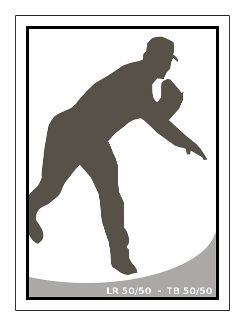
55/45
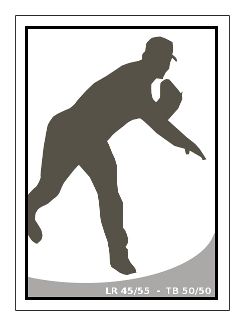
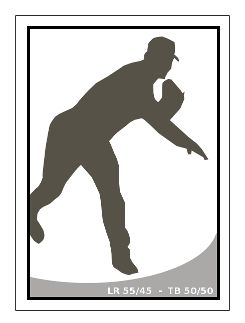
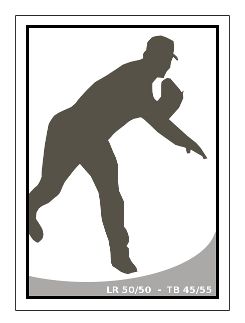
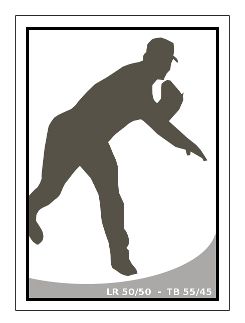
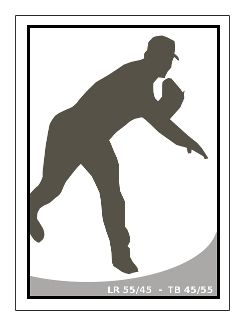
60/40
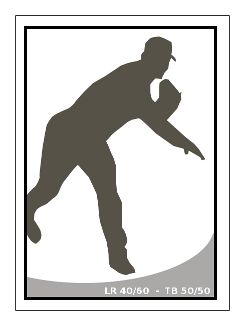

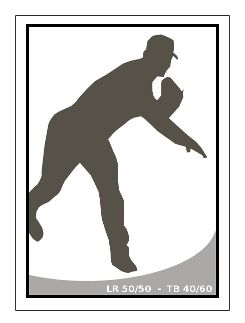
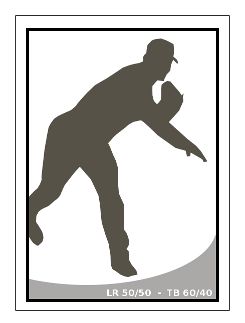
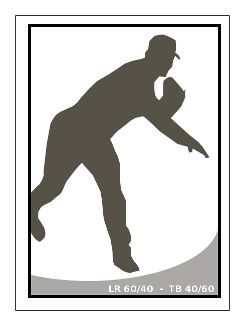
65/35
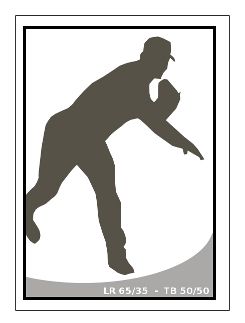
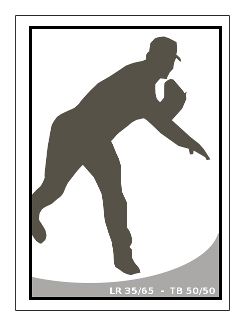

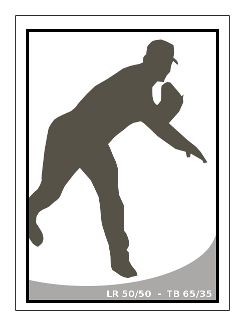
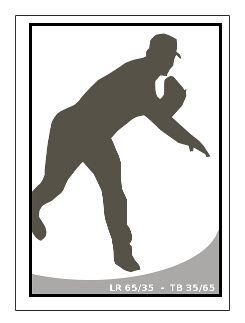
70/30
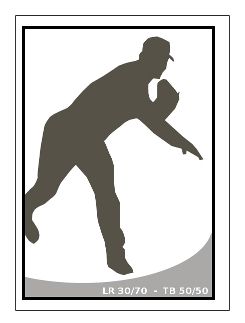
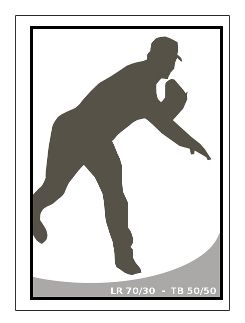
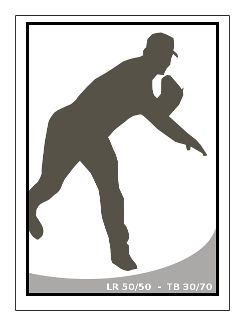
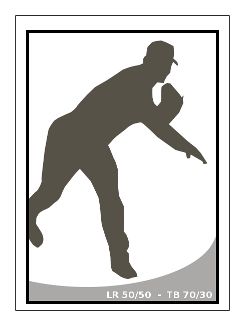

75/25
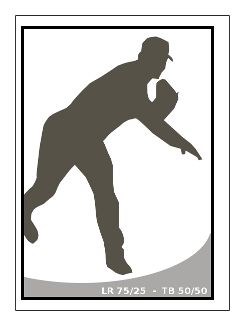
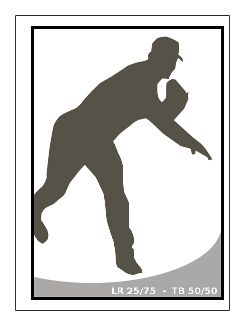

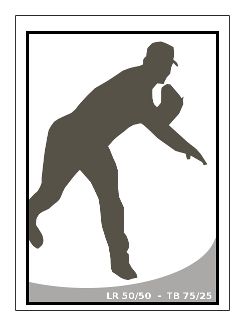
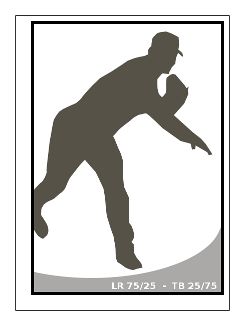
80/20
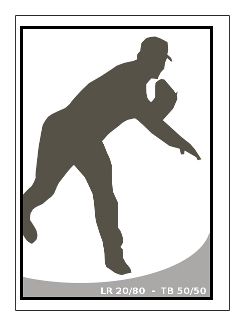
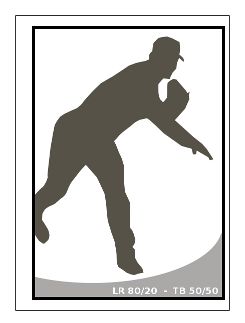
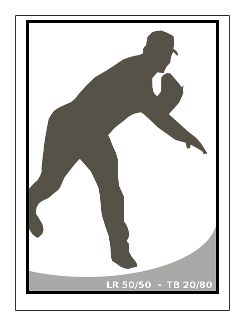
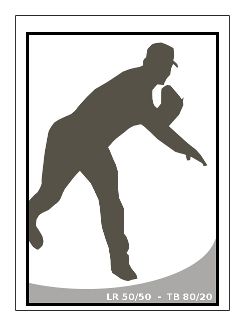

85/15
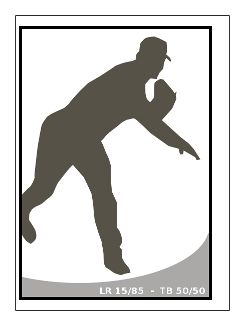
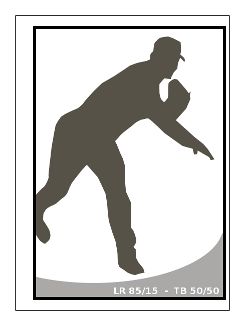
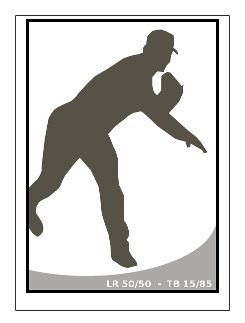
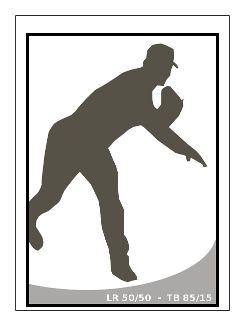
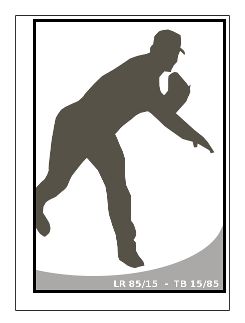
90/10
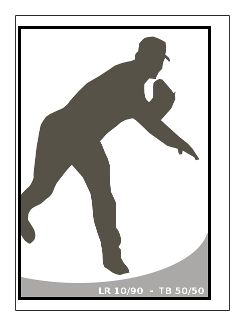
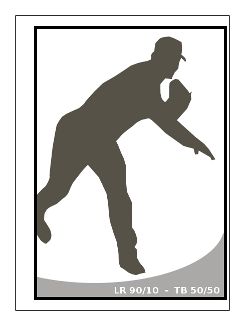
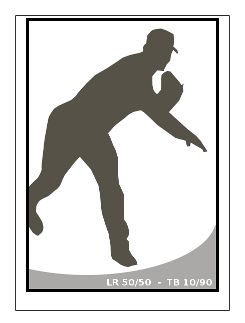


-----------------------------------------------------------------------------------------------------------------------------------------------------------------------------------------------------------------------------
PSA Grading Standards for Centering
PSA 10
Measuring Centering
Diamond Cut
Sometimes cards are cut with the image not parallel to the edge of the card stock. This is referred to as a diamond cut. In some cases this is not easily noticeable, in others it is very apparent. When measuring the border for centering, it's a good practice to always measure a card at both extremities of a given edge. Use the extremity with the worst centering to determine that border's centering balance. In cases where this is apparent, the card may be determined by PSA to be a Miscut (MC).
Worst Value
If a card has a different centering balance from top-bottom vs. left-right (it almost always will), use the worst centering value to determine the card's overall balance.
How to Calculate
Here is a link to another thread with a centering tool I made for MS Excel. The spreadsheet uses both traditional centering (60/40) and a numerical value (1.50) to determine centering. I find a numerical value quicker and easier to read, however, I wanted people who prefer to use traditional centering to get use out of the tool. In the decimal way of expressing centering a 1.00 is a perfectly centered card, 9.00 is 90/10. It's just taking the larger number and dividing it by the smaller.
In case you don't have Excel, simply don't like the tool, or love doing math - here is how to manually calculate the centering of a card:
Qualifiers
OC (Off Center)
When the centering of the card falls below the minimum standard for that grade it will be designated "OC." PSA determines centering by comparing the measurements of the borders from left to right and top to bottom. The centering is designated as the percent of difference at the most off-center part of the card. A 5% leeway is given to the front centering minimum standards for cards which grade NM 7 or better. For example, a card that meets all of the other requirements for PSA MINT 9 and measures 60/40 off-center on the front automatically meets the PSA front centering standards for MINT 9. If a card meets all of the other requirements for PSA MINT 9 and measures 65/35 off-center on the front, it may be deemed to meet the PSA front centering standards for MINT 9 if the eye appeal of the card is good.
MC (Miscut)
Cards that exhibit an atypical cut for the issue or ones that contain partial portions of more than one card will be designated "MC."
-----------------------------------------------------------------------------------------------------------------------------------------------------------------------------------------------------------------------------
Visual Guide to Centering
50/50

55/45





60/40





65/35





70/30





75/25





80/20





85/15





90/10





-----------------------------------------------------------------------------------------------------------------------------------------------------------------------------------------------------------------------------
PSA Grading Standards for Centering
PSA 10
- Front: Between 55/45 and 60/40 or better.Reverse: Must be 75/25 or better.
- Front: Between 60/40 and 65/35 or better.Reverse: Must be 90/10 or better.
- Front: Between 65/35 and 70/30 or better.Reverse: Must be 90/10 or better.
- Front: Between 70/30 and 75/25 or better.Reverse: Must be 90/10 or better.
- Front: Must be 80/20 or better.Reverse: Must be 90/10 or better.
- Front: Must be 85/15 or better.Reverse: Must be 90/10 or better.
- Front: Must be 85/15 or better.Reverse: Must be 90/10 or better.
- Front: Must be 90/10 or better.Reverse: Must be 90/10 or better.
- Front: Must be 90/10 or better.Reverse: Must be 90/10 or better.
- Front: Approximately 90/10 or better.Reverse: Approximately 90/10 or better.
- Front: Approximately 90/10 or better.Reverse: Approximately 90/10 or better.
Measuring Centering
Diamond Cut
Sometimes cards are cut with the image not parallel to the edge of the card stock. This is referred to as a diamond cut. In some cases this is not easily noticeable, in others it is very apparent. When measuring the border for centering, it's a good practice to always measure a card at both extremities of a given edge. Use the extremity with the worst centering to determine that border's centering balance. In cases where this is apparent, the card may be determined by PSA to be a Miscut (MC).
Worst Value
If a card has a different centering balance from top-bottom vs. left-right (it almost always will), use the worst centering value to determine the card's overall balance.
How to Calculate
Here is a link to another thread with a centering tool I made for MS Excel. The spreadsheet uses both traditional centering (60/40) and a numerical value (1.50) to determine centering. I find a numerical value quicker and easier to read, however, I wanted people who prefer to use traditional centering to get use out of the tool. In the decimal way of expressing centering a 1.00 is a perfectly centered card, 9.00 is 90/10. It's just taking the larger number and dividing it by the smaller.
In case you don't have Excel, simply don't like the tool, or love doing math - here is how to manually calculate the centering of a card:
- Choose a unit of measurement and stick with it. You can use a loupe with mm markings or standard units or you can use a scanned image and measure pixels using an image editor. If you use standard measurements, I find it easier to convert them all to a decimal before applying the math.Measure the border on all four sides. On each side, measure the distance between the edge of the image and the card's edge from two distinct locations which are as far apart as possible. For example, if you are measuring the right border, you want to measure at the very top and very bottom of the image. Measure the left border in the same places.Centering is expressed as a percentage of 100 and is written as X/Y. Where X is the percentage of the border on the left side of the image and Y is the percentage of the border on the right side of the card. The formula: X = 100*(LEFT BORDER/(LEFT BORDER + RIGHT BORDER)), Y = 100*(RIGHT BORDER/(LEFT BORDER + RIGHT BORDER))Of all the measurements you take, the only one that is important is the one that has the worst balance. For traditional centering, a quick way to figure this is look at all of the numbers you've calculated and find the largest number. For example, say you came up with these numbers when you measured: Top-Bottom 55/45, 57/43 and Left-Right 70/30, 73/27. In this case the largest number is 73, so 73/27 is the worst centered portion of the card and is what you'd use to determine it's final centering value and which is the highest grade it could receive based on centering.
Qualifiers
OC (Off Center)
When the centering of the card falls below the minimum standard for that grade it will be designated "OC." PSA determines centering by comparing the measurements of the borders from left to right and top to bottom. The centering is designated as the percent of difference at the most off-center part of the card. A 5% leeway is given to the front centering minimum standards for cards which grade NM 7 or better. For example, a card that meets all of the other requirements for PSA MINT 9 and measures 60/40 off-center on the front automatically meets the PSA front centering standards for MINT 9. If a card meets all of the other requirements for PSA MINT 9 and measures 65/35 off-center on the front, it may be deemed to meet the PSA front centering standards for MINT 9 if the eye appeal of the card is good.
MC (Miscut)
Cards that exhibit an atypical cut for the issue or ones that contain partial portions of more than one card will be designated "MC."
The N8 Collection: PSA Registry Sets & Showcases
0
Comments
But 1 thing I noticed is that you should have 8 pictures for each ??/?? top, bottom, L, R, and each of the 4 corners, right? or am I wrong.
Certainly not being critical, just helpful.
Thankyou for doing this!
Paul.
Later, Paul.
<< <i>GREAT JOB!!!!
But 1 thing I noticed is that you should have 8 pictures for each ??/?? top, bottom, L, R, and each of the 4 corners, right? or am I wrong.
Certainly not being critical, just helpful.
Thankyou for doing this!
Paul. >>
Technically, you're right. I guess I decided that if people couldn't figure it out with 5 examples, then they probably aren't going to. LOL!
<< <i>Technically, you're right. I guess I decided that if people couldn't figure it out with 5 examples, then they probably aren't going to. LOL!
Ur talkin' to a Guy who probably needs a couple hundred examples to get it right.
Paul.
Later, Paul.
Thanks
Craig
I would like to know more details about how the quantity of direction being off-center plays into whether or not a card gets an OC qualifier or not. The PSA grading standards specify an allowable percentage, but don't add anything about how much can be tolerated in 2 directions vs. 1. When I look at graded cards, it sure seems that being off in 2 directions, both L/R & T/B on the same card such as you have in the far right example for each of the rows in the OP, yields an OC when it wouldn't get the qualifier if it were only 1 or the other direction. (Personally I find the cards that are OC in both directions at the same time to be too visually distracting and would rarely if ever purchase.) Point being, if you have a card that is 70/30 L/R and 50/50 T/B that grades a 7, would the same card with a 70/30 L/R & 70/30 T/B get a 7OC by comparison? Is there an official grading standard that says that it's not really a 70/30 tolerance you have but actually more of a total +/- 20 to be distributed among the front centering measurements, such that you could either have a 70/30 in one direction or 60/40 in 2 directions? This example is what would make sense to me as fair and within stated guidelines. If this is the case, then I think the published grading standards should be revised to better detail this distribution. A 70/30 in both directions just looks like a worse card than a 70/30 + 50/50, where a 60/40 + 60/40 as good or better than a 70/30 + 50/50. I sub cards w/ OC in one direction but typically just keep the 2 direction OC cards raw since I'm not a fan of qualifiers.
as in: "That 65/35 card looks 90/10 to my eye."
WTB: 2001 Leaf Rookies & Stars Longevity: Ryan Jensen #/25
<< <i>With the "not-based-in-fact" centering opinions of some on these boards, I'm half expecting someone to say that the cards more poorly centered than the numbers indicate.
as in: "That 65/35 card looks 90/10 to my eye." >>
let's talk about tilting.
<< <i>Great work lining up examples as a reference in this post!
I would like to know more details about how the quantity of direction being off-center plays into whether or not a card gets an OC qualifier or not. The PSA grading standards specify an allowable percentage, but don't add anything about how much can be tolerated in 2 directions vs. 1. When I look at graded cards, it sure seems that being off in 2 directions, both L/R & T/B on the same card such as you have in the far right example for each of the rows in the OP, yields an OC when it wouldn't get the qualifier if it were only 1 or the other direction. (Personally I find the cards that are OC in both directions at the same time to be too visually distracting and would rarely if ever purchase.) Point being, if you have a card that is 70/30 L/R and 50/50 T/B that grades a 7, would the same card with a 70/30 L/R & 70/30 T/B get a 7OC by comparison? Is there an official grading standard that says that it's not really a 70/30 tolerance you have but actually more of a total +/- 20 to be distributed among the front centering measurements, such that you could either have a 70/30 in one direction or 60/40 in 2 directions? This example is what would make sense to me as fair and within stated guidelines. If this is the case, then I think the published grading standards should be revised to better detail this distribution. A 70/30 in both directions just looks like a worse card than a 70/30 + 50/50, where a 60/40 + 60/40 as good or better than a 70/30 + 50/50. I sub cards w/ OC in one direction but typically just keep the 2 direction OC cards raw since I'm not a fan of qualifiers. >>
Based on the definition of the OC qualifier, which I have now added above, whether or not the card is bi-directionally off-center doesn't seem to be a factor. If centering in either or both directions falls outside of the criteria for that grade, it gets an OC. I understand you can specifically ask for an unqualified grade as well. In this scenario, if the card was a PSA 9 OC and you requested an unqualified grade - it would be a PSA 8 if centering was within the tolerance for this grade.
I agree, the compound centering issues look pretty bad on some of the examples. I find that I'd be more likely to buy a card that was less centered top to bottom than I would left to right. The left to right centering is really what my eye picks up on.
<< <i>With the "not-based-in-fact" centering opinions of some on these boards, I'm half expecting someone to say that the cards more poorly centered than the numbers indicate.
as in: "That 65/35 card looks 90/10 to my eye." >>
LOL! I assure you they're accurate. I used a 20px border, so it was a matter of moving the image out of center 2px in any direction to change the centering balance by 5%. I have seen some of those responses in other threads on centering that you're referring to. That's part of why I made this thread as well.
I think overall, people value centering highly so they don't submit cards that appear OC to the eye even when they would qualify for the grade. For people selling cards, this probably makes sense because they'll get a higher price for cards that have the best eye appeal. For collectors, it comes down to what is important to you. If you want a good example and can live with a minor OC, this thread will help you see what it really takes to make a certain grade centering-wise. If perfect centering is part of what makes a good example of a card for a person, by all means they should pursue it.
Thanks
<< <i>Someone please explain to me how a card with 80/20 can get a PSA 7 please.
Thanks >>
"A 5% leeway is given to the front centering minimum standards for cards which grade NM 7 or better. For example, a card that meets all of the other requirements for PSA MINT 9 and measures 60/40 off-center on the front automatically meets the PSA front centering standards for MINT 9."
Since 75/25 is the bottom end of a PSA 7, depending on how they measured the 80/20 it could have fallen within this tolerance.
<< <i>
<< <i>Great work lining up examples as a reference in this post!
I would like to know more details about how the quantity of direction being off-center plays into whether or not a card gets an OC qualifier or not. The PSA grading standards specify an allowable percentage, but don't add anything about how much can be tolerated in 2 directions vs. 1. When I look at graded cards, it sure seems that being off in 2 directions, both L/R & T/B on the same card such as you have in the far right example for each of the rows in the OP, yields an OC when it wouldn't get the qualifier if it were only 1 or the other direction. (Personally I find the cards that are OC in both directions at the same time to be too visually distracting and would rarely if ever purchase.) Point being, if you have a card that is 70/30 L/R and 50/50 T/B that grades a 7, would the same card with a 70/30 L/R & 70/30 T/B get a 7OC by comparison? Is there an official grading standard that says that it's not really a 70/30 tolerance you have but actually more of a total +/- 20 to be distributed among the front centering measurements, such that you could either have a 70/30 in one direction or 60/40 in 2 directions? This example is what would make sense to me as fair and within stated guidelines. If this is the case, then I think the published grading standards should be revised to better detail this distribution. A 70/30 in both directions just looks like a worse card than a 70/30 + 50/50, where a 60/40 + 60/40 as good or better than a 70/30 + 50/50. I sub cards w/ OC in one direction but typically just keep the 2 direction OC cards raw since I'm not a fan of qualifiers. >>
Based on the definition of the OC qualifier, which I have now added above, whether or not the card is bi-directionally off-center doesn't seem to be a factor. If centering in either or both directions falls outside of the criteria for that grade, it gets an OC. I understand you can specifically ask for an unqualified grade as well. In this scenario, if the card was a PSA 9 OC and you requested an unqualified grade - it would be a PSA 8 if centering was within the tolerance for this grade.
I agree, the compound centering issues look pretty bad on some of the examples. I find that I'd be more likely to buy a card that was less centered top to bottom than I would left to right. The left to right centering is really what my eye picks up on. >>
Thanks for adding more. I hear you on the reply, but I don't think it quite addresses the question I was trying to ask. Not sure if I was as clear as I could have been, but I'm more curious about distributing total centering tolerance per grade combined over both directions of centering, since I think the published standards where a percentage is specified reads to me like incomplete data.
<< <i>
<< <i>
<< <i>Great work lining up examples as a reference in this post!
I would like to know more details about how the quantity of direction being off-center plays into whether or not a card gets an OC qualifier or not. The PSA grading standards specify an allowable percentage, but don't add anything about how much can be tolerated in 2 directions vs. 1. When I look at graded cards, it sure seems that being off in 2 directions, both L/R & T/B on the same card such as you have in the far right example for each of the rows in the OP, yields an OC when it wouldn't get the qualifier if it were only 1 or the other direction. (Personally I find the cards that are OC in both directions at the same time to be too visually distracting and would rarely if ever purchase.) Point being, if you have a card that is 70/30 L/R and 50/50 T/B that grades a 7, would the same card with a 70/30 L/R & 70/30 T/B get a 7OC by comparison? Is there an official grading standard that says that it's not really a 70/30 tolerance you have but actually more of a total +/- 20 to be distributed among the front centering measurements, such that you could either have a 70/30 in one direction or 60/40 in 2 directions? This example is what would make sense to me as fair and within stated guidelines. If this is the case, then I think the published grading standards should be revised to better detail this distribution. A 70/30 in both directions just looks like a worse card than a 70/30 + 50/50, where a 60/40 + 60/40 as good or better than a 70/30 + 50/50. I sub cards w/ OC in one direction but typically just keep the 2 direction OC cards raw since I'm not a fan of qualifiers. >>
Based on the definition of the OC qualifier, which I have now added above, whether or not the card is bi-directionally off-center doesn't seem to be a factor. If centering in either or both directions falls outside of the criteria for that grade, it gets an OC. I understand you can specifically ask for an unqualified grade as well. In this scenario, if the card was a PSA 9 OC and you requested an unqualified grade - it would be a PSA 8 if centering was within the tolerance for this grade.
I agree, the compound centering issues look pretty bad on some of the examples. I find that I'd be more likely to buy a card that was less centered top to bottom than I would left to right. The left to right centering is really what my eye picks up on. >>
Thanks for adding more. I hear you on the reply, but I don't think it quite addresses the question I was trying to ask. Not sure if I was as clear as I could have been, but I'm more curious about distributing total centering tolerance per grade combined over both directions of centering, since I think the published standards where a percentage is specified reads to me like incomplete data. >>
I think I get what you're saying, however, none of the published standards allude to the fact that having a centering issue in both directions is more likely to result in the OC designation. Also, none of the published standards talk about a total +/- balance that the card needs to fit within in order to avoid the OC qualifier. If you have some scans of card examples that you can share I can evaluate here in the thread.
<< <i>The minimum allowable centering for a PSA 7 is 75/25, not 80/20. The 5% leeway has already been given. >>
After re-reading the full paragraph on the 5% variance and the standards for a PSA 9 (the example used in that paragraph), I concur. My previous post was incorrect. So, for the OP, I guess the final answer is that an 80/20 card should not meet PSA 7 standards.
<< <i>
<< <i>
<< <i>
<< <i>Great work lining up examples as a reference in this post!
I would like to know more details about how the quantity of direction being off-center plays into whether or not a card gets an OC qualifier or not. The PSA grading standards specify an allowable percentage, but don't add anything about how much can be tolerated in 2 directions vs. 1. When I look at graded cards, it sure seems that being off in 2 directions, both L/R & T/B on the same card such as you have in the far right example for each of the rows in the OP, yields an OC when it wouldn't get the qualifier if it were only 1 or the other direction. (Personally I find the cards that are OC in both directions at the same time to be too visually distracting and would rarely if ever purchase.) Point being, if you have a card that is 70/30 L/R and 50/50 T/B that grades a 7, would the same card with a 70/30 L/R & 70/30 T/B get a 7OC by comparison? Is there an official grading standard that says that it's not really a 70/30 tolerance you have but actually more of a total +/- 20 to be distributed among the front centering measurements, such that you could either have a 70/30 in one direction or 60/40 in 2 directions? This example is what would make sense to me as fair and within stated guidelines. If this is the case, then I think the published grading standards should be revised to better detail this distribution. A 70/30 in both directions just looks like a worse card than a 70/30 + 50/50, where a 60/40 + 60/40 as good or better than a 70/30 + 50/50. I sub cards w/ OC in one direction but typically just keep the 2 direction OC cards raw since I'm not a fan of qualifiers. >>
Based on the definition of the OC qualifier, which I have now added above, whether or not the card is bi-directionally off-center doesn't seem to be a factor. If centering in either or both directions falls outside of the criteria for that grade, it gets an OC. I understand you can specifically ask for an unqualified grade as well. In this scenario, if the card was a PSA 9 OC and you requested an unqualified grade - it would be a PSA 8 if centering was within the tolerance for this grade.
I agree, the compound centering issues look pretty bad on some of the examples. I find that I'd be more likely to buy a card that was less centered top to bottom than I would left to right. The left to right centering is really what my eye picks up on. >>
Thanks for adding more. I hear you on the reply, but I don't think it quite addresses the question I was trying to ask. Not sure if I was as clear as I could have been, but I'm more curious about distributing total centering tolerance per grade combined over both directions of centering, since I think the published standards where a percentage is specified reads to me like incomplete data. >>
I think I get what you're saying, however, none of the published standards allude to the fact that having a centering issue in both directions is more likely to result in the OC designation. Also, none of the published standards talk about a total +/- balance that the card needs to fit within in order to avoid the OC qualifier. If you have some scans of card examples that you can share I can evaluate here in the thread. >>
For example, look at the cards you've drawn up in your OP. For the row of them that are 75/25, Are you saying that it is your understanding that all of them should meet the standards for a 7? I feel like the one at the far right should get a grade lower or an OC qualifier when comparing to the others in the row.
<< <i>Thanks. Here's my centering guide. Look at the card. >>
LOL.
<< <i>
<< <i>
<< <i>
<< <i>
<< <i>Great work lining up examples as a reference in this post!
I would like to know more details about how the quantity of direction being off-center plays into whether or not a card gets an OC qualifier or not. The PSA grading standards specify an allowable percentage, but don't add anything about how much can be tolerated in 2 directions vs. 1. When I look at graded cards, it sure seems that being off in 2 directions, both L/R & T/B on the same card such as you have in the far right example for each of the rows in the OP, yields an OC when it wouldn't get the qualifier if it were only 1 or the other direction. (Personally I find the cards that are OC in both directions at the same time to be too visually distracting and would rarely if ever purchase.) Point being, if you have a card that is 70/30 L/R and 50/50 T/B that grades a 7, would the same card with a 70/30 L/R & 70/30 T/B get a 7OC by comparison? Is there an official grading standard that says that it's not really a 70/30 tolerance you have but actually more of a total +/- 20 to be distributed among the front centering measurements, such that you could either have a 70/30 in one direction or 60/40 in 2 directions? This example is what would make sense to me as fair and within stated guidelines. If this is the case, then I think the published grading standards should be revised to better detail this distribution. A 70/30 in both directions just looks like a worse card than a 70/30 + 50/50, where a 60/40 + 60/40 as good or better than a 70/30 + 50/50. I sub cards w/ OC in one direction but typically just keep the 2 direction OC cards raw since I'm not a fan of qualifiers. >>
Based on the definition of the OC qualifier, which I have now added above, whether or not the card is bi-directionally off-center doesn't seem to be a factor. If centering in either or both directions falls outside of the criteria for that grade, it gets an OC. I understand you can specifically ask for an unqualified grade as well. In this scenario, if the card was a PSA 9 OC and you requested an unqualified grade - it would be a PSA 8 if centering was within the tolerance for this grade.
I agree, the compound centering issues look pretty bad on some of the examples. I find that I'd be more likely to buy a card that was less centered top to bottom than I would left to right. The left to right centering is really what my eye picks up on. >>
Thanks for adding more. I hear you on the reply, but I don't think it quite addresses the question I was trying to ask. Not sure if I was as clear as I could have been, but I'm more curious about distributing total centering tolerance per grade combined over both directions of centering, since I think the published standards where a percentage is specified reads to me like incomplete data. >>
I think I get what you're saying, however, none of the published standards allude to the fact that having a centering issue in both directions is more likely to result in the OC designation. Also, none of the published standards talk about a total +/- balance that the card needs to fit within in order to avoid the OC qualifier. If you have some scans of card examples that you can share I can evaluate here in the thread. >>
For example, look at the cards you've drawn up in your OP. For the row of them that are 75/25, Are you saying that it is your understanding that all of them should meet the standards for a 7? I feel like the one at the far right should get a grade lower or an OC qualifier when comparing to the others in the row. >>
Well, the way you've worded that question makes it tricky. Because 75/25 is the bottom of the PSA 7 centering window, this is the borderline between a 7 and a 6 so it could be subjective. I think the card would have to be a dead 7 in all other aspects and have good eye appeal for it to get that grade with centering at the extreme. I think it depends on the grader as the word "leeway" used in their standards tells me it's subjective. However, if you look at the 70/30 row, those would unquestionably be a 7 provided the card was up to standard in other areas, including the card that is 70/30 in two directions.
Here are some examples of cards that are bi-directionally off-centered without the OC designation. I grabbed these from eBay, they are PSA 7 to keep with the theme of this question.
So it sounds like if hypothetically you have 2 of the same card that are in identical condition except for the centering where one is at the boundary of centering tolerance for a certain grade in one direction and the other card is at the same centering tolerance limit bi-directionally, then the two cards could conceivably be given the same grade by the same grader. I can't say I agree that it makes sense or is the way things should be, but it does sound like the way things actually are according to your research and all the time spent measuring by pixel. Keep up the good work!